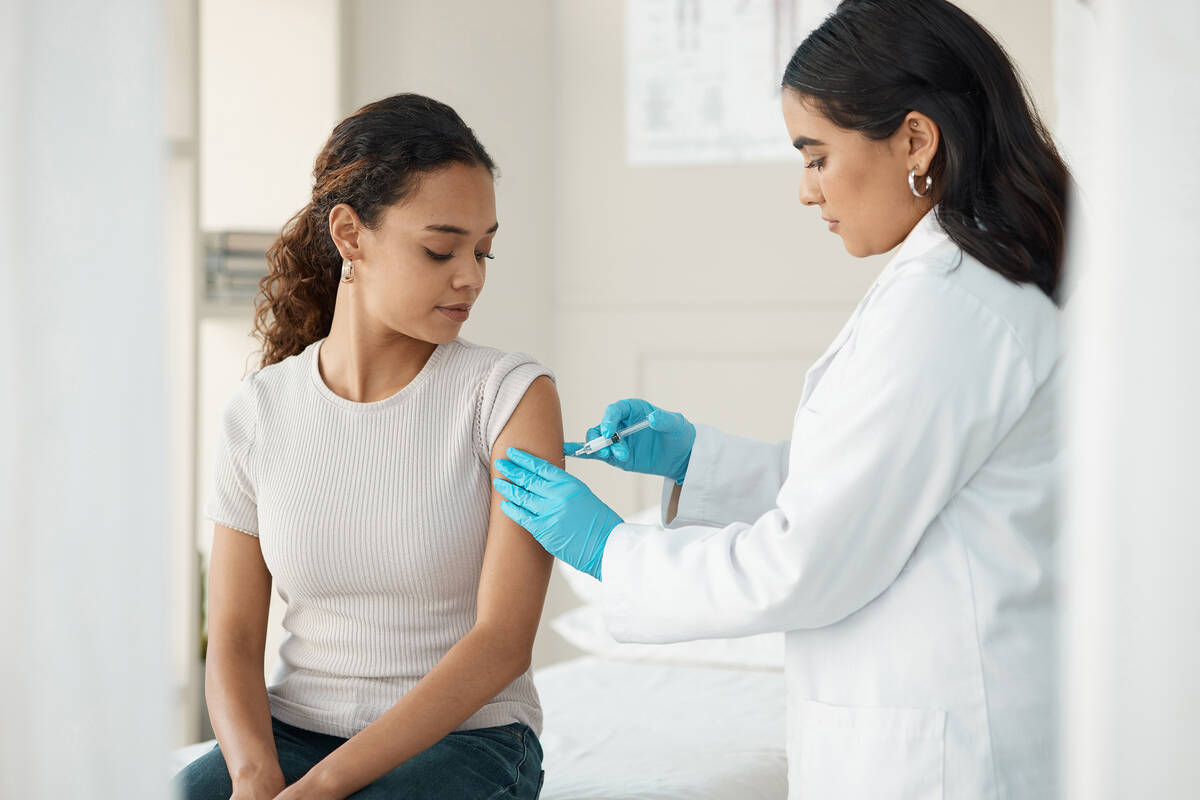A guide to the 3 types of vaccines that will be available this fall

The fall vaccination season is just around the corner, and officials are set to roll out another updated version of the COVID-19 vaccine, as well as new tools to protect against RSV.
Here’s a rundown of the three types of vaccines that will available in the coming months.
A new COVID-19 vaccine
A fall 2023 version of the COVID vaccine is likely to be reviewed by the U.S. Food and Drug Administration and the Centers for Disease Control and Prevention in the latter part of September, officials say.
Guidance on which groups of people should get that shot will come around that time.
The newest shot eventually will supersede the 2022 version. Introduced 11 months ago, the booster was designed against the BA.5 and BA.4 sublineages of the omicron variant. It was called a bivalent shot because it was designed to protect against both the latest sublineages as well as the ancestral strain.
The 2023 version of the vaccine also will be designed against the latest dominant omicron subvariant, XBB.1.5. It will be a monovalent vaccine focused only on XBB. Scientists say that the 2023 COVID-19 vaccine formula doesn’t need to protect against the ancestral strain because the original version of the coronavirus that emerged in late 2019 in Wuhan, China, is essentially extinct.
Being up to date on COVID-19 vaccinations is an important way to protect against the disease, experts say. While most people have been vaccinated in some form, many haven’t received the latest version.
In April, federal health officials recommended that seniors 65 and older and immunocompromised people be allowed to get an additional bivalent booster at least four months after their initial updated booster.
If you aren’t current on your COVID-19 shots, are immunocompromised or older, UC San Francisco infectious diseases expert Dr. Peter Chin-Hong suggests getting the 2022 version of the shot now, given that COVID-19 levels are rising.
“I’m just worried about them getting very sick,” Chin-Hong said.
But for younger people and those who are not immunocompromised, Chin-Hong said it’s probably fine to wait for the 2023 version.
People can still talk to their doctors about getting the 2022 version now, though. Chin-Hong said he has heard of a mother who had just given birth and was considering getting a 2022 version of the COVID-19 shot so she could pass on antibodies to the baby. Infants cannot be vaccinated until they are at least 6 months old.
A new RSV drug
This month the CDC gave the green light to a new immunization to protect against RSV, or respiratory syncytial virus, which can cause significant illness and death in younger children and older people.
The immunization is called nirsevimab, and has the brand name Beyfortus, and is being distributed by AstraZeneca and Sanofi. It’s not technically a vaccine, which boosts immunity for the future; rather, it’s a long-acting monoclonal antibody that acts as a preventive drug that provides immediate and short-term protection, according to the Johns Hopkins Bloomberg School of Public Health.
Beyfortus has been found to reduce the risk of hospitalizations and health care visits for RSV in infants by 80 percent, the CDC reported. It is likely to become available sometime this fall.
RSV became a household name last fall as the virus stressed children’s hospitals across the nation. The virus sickened so many children last year that some hospitals reported running short of pediatric beds.
In a typical year, RSV can lead to 100 to 300 deaths in children younger than 5 and 6,000 to 10,000 deaths among seniors 65 and older. The virus also can cause up to 80,000 hospitalizations a year among children younger than 5 and as many as 160,000 a year in seniors.
The CDC recommended Beyfortus “for all infants younger than 8 months, born during — or entering — their first RSV season (typically fall through spring). For a small group of children between the ages of 8 and 19 months who are at increased risk of severe RSV disease, such as children who are severely immunocompromised, a dose is recommended in their second season.”
“This new RSV immunization provides parents with a powerful tool to protect their children against the threat of RSV,” CDC Director Dr. Mandy Cohen said in a statement. “RSV is the leading cause of hospitalizations for infants and older babies at higher risk, and today we have taken an important step to make this lifesaving product available.”
Two vaccines against RSV also were given the green light this summer for older adults. In June, the CDC endorsed an advisory group’s recommendation for new RSV vaccines for those 60 and older, a decision that CDC officials said should be based on a patient’s discussion with their health care provider on whether the vaccination is right for them. Those vaccines are being offered by GSK and Pfizer.
Flu shots
The updated flu vaccination formula has been set for this fall. The CDC suggests that the best times to get vaccinated against the flu are in September and October.
Getting vaccinated in August is not recommended for most people, the CDC advised, unless there is reason to expect that the person can’t get vaccinated in September or October. There are some exceptions: Pregnant people in their third trimester may want to get a flu vaccine in August to help ensure their newborn babies are protected because they are too young to get a flu shot, according to the CDC.
Everyone 6 months and older should get the annual flu shot, a CDC recommendation that has remained consistent since 2010.